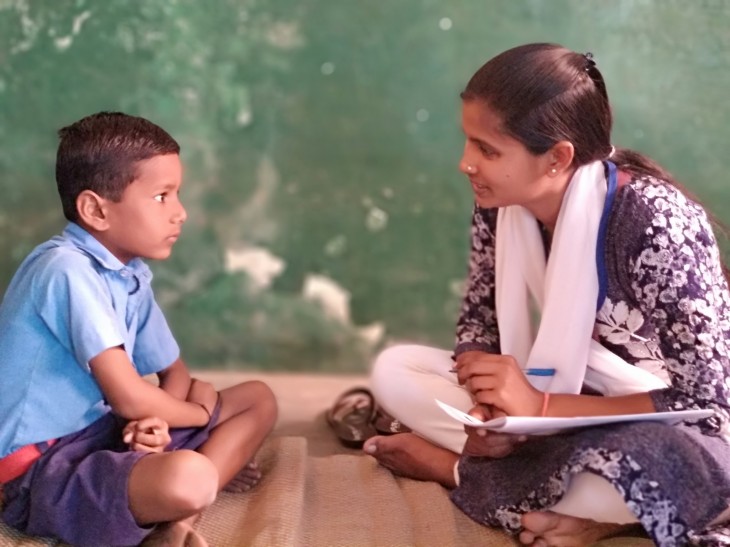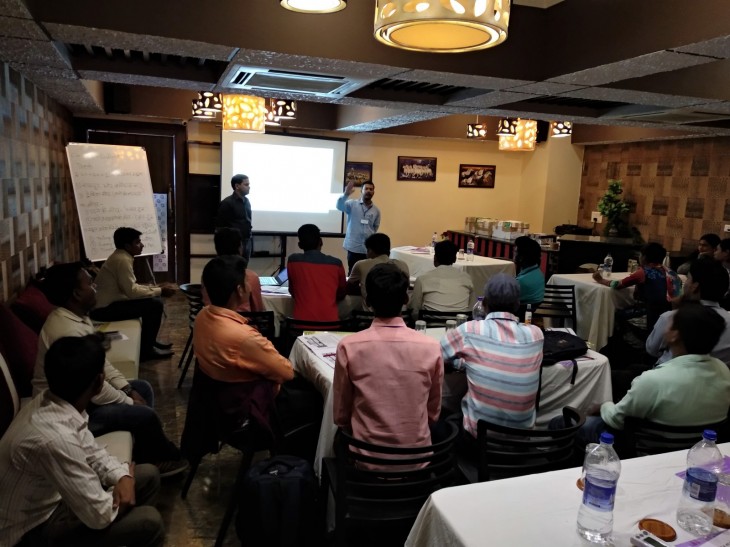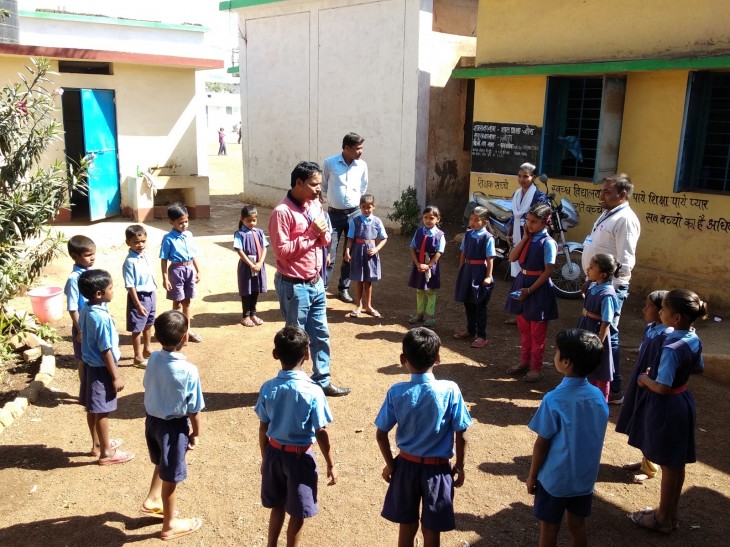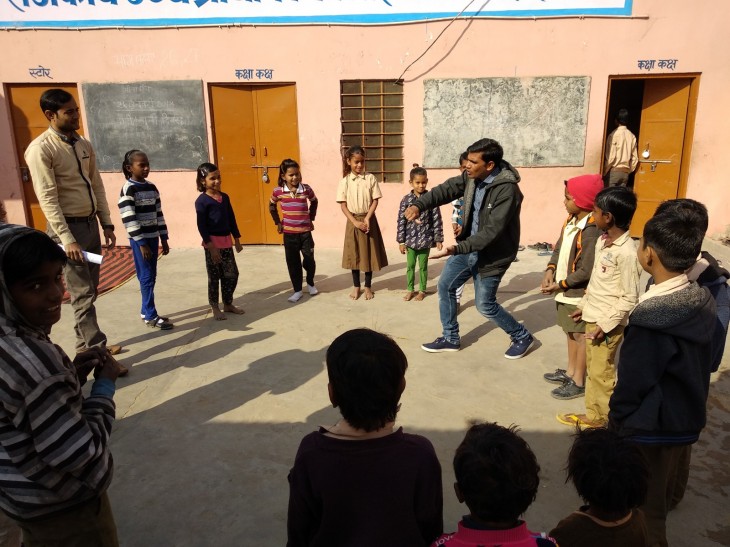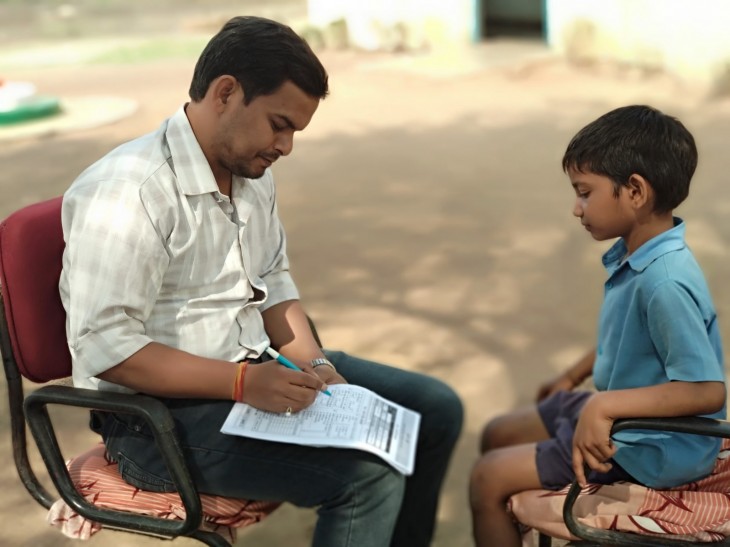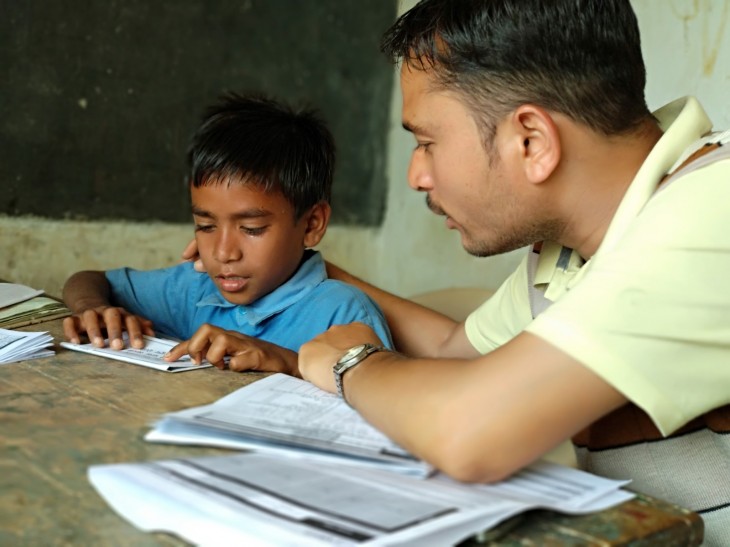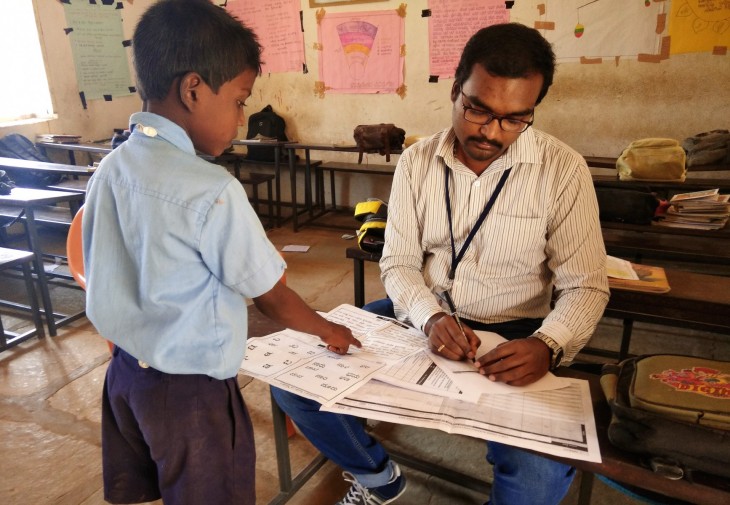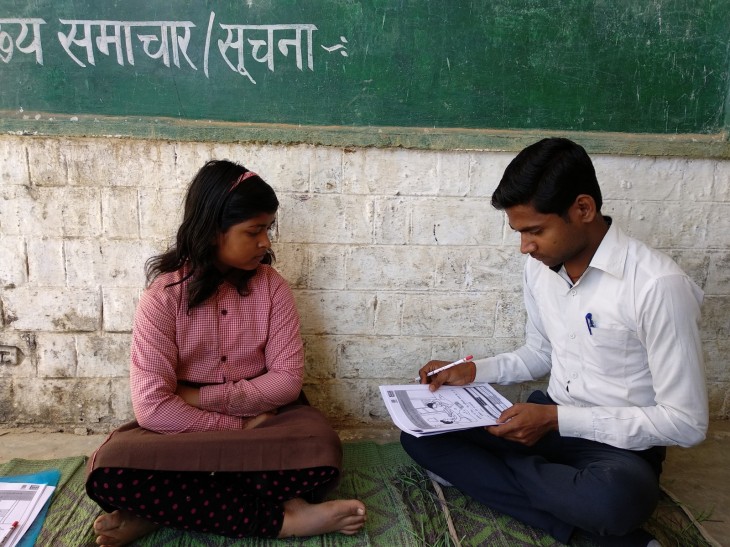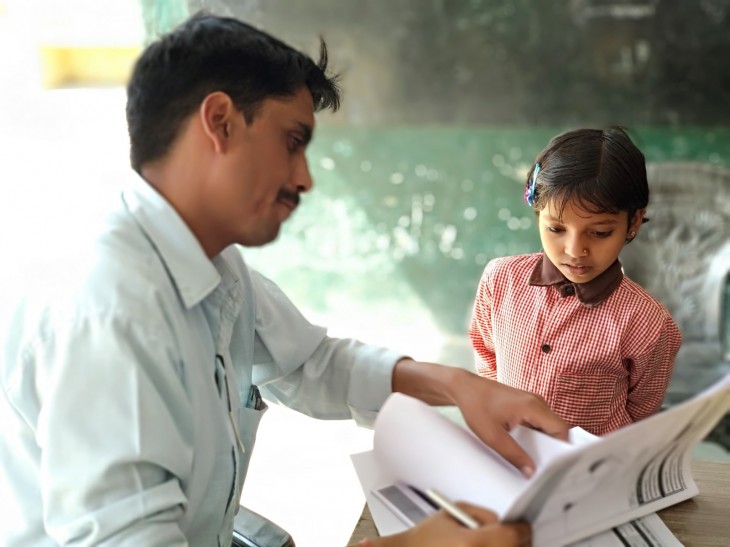MAJOR RESEARCH AND ASSESSMENT STUDIES IN EDUCATION
Annual Status of Education Report (ASER)
ASER stands for Annual Status of Education Report. This is an annual survey that aims to provide reliable estimates of children’s enrolment and basic learning levels for each district and state in India. ASER has been conducted every year since 2005 in all rural districts of India. It is the largest citizen-led survey in India. It is also the only annual source of information on children’s learning outcomes available in India today. See ASER survey for more information.
Duration: Every year from 2005 - 2014; 2016
Partners: Pratham, District Partners
Location: All rural districts in India
Documents: ASER reports from 2005 onwards
Household survey of basic learning levels of children 6-14, conducted annually in all rural districts.
Exploring Post Primary Schooling
While impressive strides have been made towards universalising access to elementary education in India, available evidence indicates that learning levels at the primary level remain poor. However, while we know much about learning levels at primary level, there is insufficient evidence at post- primary level. This study carried out in one district each in Bihar and Maharashtra helps bridge this gap in our knowledge of post - primary education.
The study finds that large numbers of children without foundational skills in math and language move smoothly ‘upward’ through school system. The fact that around 13.6% of upper-primary children who made grade appropriate transitions could not read a grade 2 level text fluently and 10% could not solve subtraction problems repudiate the assumption that transition through grades corresponds to grade-appropriate learning.
In addition, the report provides information on children’s performance in different competencies in four subjects which can serve as important feedback into curriculum development, academic resource planning and teacher training.
The analysis of classroom practices underscores the distance between the National Curriculum Framework objectives and the reality on the ground. The classroom data highlights the lack of use of teaching learning material (TLM) in classrooms and group activities among children, among other issues. The existence of multi-grade teaching aggravates the complexity of teaching children with different learning levels. Given the heavy emphasis on textbooks where ‘grade appropriate competency’ is the construct that underpins the textbook, the majority of children who are far below the grade appropriate learning level remain stuck in low learning level trap.
With the shift in focus from inputs to outcomes and from primary to secondary education, the 6th Joint Review Mission (JRM) of the Rashtriya Madhyamik Shiksha Mission (RMSA) has stressed the need for surveys looking at overall and subject-wise learning levels. In addition to the many policy issues highlighted by its findings, this study can also provide a variety of insights into how such assessments can be designed and conducted. The baseline report can be accessed here along with the appendix. The endline report can be accessed here.
Duration: 2012-2015
Partners: Pratham and MacArthur Foundation
Location: Maharashtra (Satara district) and Bihar (Nalanda district)
Documents : Policy Brief
The objective of this study is to generate new evidence regarding access and the quality of post primary education in India.
Study on access, transition and learning in secondary education: A two-block study
This two-year study (2014-2016) aimed to provide an in-depth understanding of factors that influence children’s transition from elementary to secondary school.Three interrelated issues were investigated: (i) school provisioning at the elementary and post-elementary stage; (ii) student learning outcomes at the end of elementary school (Std VIII) and one year later (Std IX), and (iii) patterns of transition into secondary schooling. The study was conducted in two rural blocks each of Hardoi district, Uttar Pradesh and Sambalpur district, Odisha (4 blocks in total) and data collection was conducted in three phases.
In the first phase, all educational and vocational centres located in selected blocks were mapped. In the second phase, a school-based survey and learning assessments of grade 8 students were conducted in all mapped schools offering this grade. In the third phase, conducted one year later, these students were tracked to record their post-elementary transition status, collect household information and administer an end-line learning assessment. Students were administered learning tests in language (Hindi and Oriya), English and math. The learning assessments included a pen and paper test followed by an oral, one-on- one test.
Findings from this study indicate inadequate provisioning of schools at the secondary stage particularly among government schools, with a consequent shift to the private sector. This trend was more evident in the surveyed blocks of Hardoi than in Sambalpur, where many more government schools provided education in the secondary grades.
With respect to transition from elementary to secondary school, the study found enormous differences across the two locations. In Hardoi, close to about 40 percent children discontinued education by end line while the corresponding proportion for Sambalpur is less than 10 percent. School continuation rates for girls in the study were much lower than those for boys as well as for the sample of children who reported to be married at end line. Multivariate analysis confirms that all factors being equal, children’s prior learning levels significantly predict their continuation into secondary grades. In other words, children with poor learning outcomes in Std VIII are likelier to drop out after elementary school.
It is equally important to note that large proportions of children in secondary grades at end line had not acquired even the most basic competencies in language and math. Of these children, about 18 percent children in Sambalpur and 26 percent children in Hardoi were unable to read a Std II level text at end line. These data indicate that children in secondary grades in these locations lack critical abilities in language and arithmetic that may not only hinder students’ ability to transact curricula of far greater difficulty than the concepts tested in this study, but also overburden secondary schools that will need to deal with the children’s learning deficits.
For more information on the study and its findings, please look at the documents below.
Duration: 2014-2016
Partners: Kusuma Trust (UK) and Pratham / ASER Centre
Location: Hardoi, Uttar Pradesh and Sambalpur, Orissa
Documents: Full Report | Policy Brief (January 2018) | Main findings
This study will explore factors which influence access to secondary-level schooling and transition patterns. The study will also assess the learning levels of adolescents.
Baseline Study of Teacher Performance in Bihar
Bihar is in the process of implementing a series of far reaching changes to its elementary education system, aiming to address issues of both access and quality. Given the ambitious scope of interventions to increase both the quantity and the quality of teachers in the system, it is important to develop methods and measures to provide timely information about whether intended objectives are being achieved.
The objective of the study is to identify specific teacher, classroom and school characteristics that are currently associated with better student learning. It covers a sample of about 2,200 teachers and 4,250 children from 400 randomly selected schools in the 4 districts. These schools, teachers and students were tracked three times over the course of one academic year in order to document teacher attributes and performance characteristics as well as indicators related to school organization and functioning; and subsequently to assess the relationship between these indicators and student learning outcomes.
Duration: 2014
Partners: Government of Bihar, The World Bank
Location: Purnia, East Champaran, Jamui and Rohtas districts
Documents: Project overview
Identifies teacher, classroom and school characteristics that are associated with student learning in 4 districts of Bihar
Bihar Elementary School Study
During May 2014, the Bihar Elementary School Study assessed Hindi and mathematics learning outcomes of students of Std 2, Std 4 and Std 6 of randomly selected clusters in all districts of Bihar. All government schools with elementary classes in the selected clusters were included and all children of the relevant classes who were present on the day of the visit were assessed. An oral assessment was administered to Std 2 children, and both oral and written assessments were given to Std 4 and Std 6 children. In all, more than 1,000 schools and 60,000 children participated in the study.
In addition to assessing children's learning, a key objective of the study was to build the capacity of key people at the district level. The study was designed in collaboration with Bihar state government officials and UNICEF. At district level, DIET faculty, CRC coordinators, and Pratham/ ASER staff were responsible for training DIET students to conduct the fieldwork as well as for monitoring its progress.
Duration: 2014
Partners: Government of Bihar and UNICEF
Location: 79 randomly selected clusters across all districts of Bihar
Impact of Mother’s Literacy on Children’s Learning
Pratham and ASER Centre carried out a year-long programme in two blocks in the Purnea district of Bihar and in two blocks in Ajmer district of Rajasthan. The programme was designed to explore mothers' literacy and engagement with children at home and their influence on children's learning levels. The impact evaluation of this set of interventions was done by JPAL-South Asia.
Duration: 2011-2012
Partners: Abdul Latif Jameel Poverty Action Lab (JPAL), Pratham
Location: Bihar (Purnea district) and Rajasthan (Ajmer district)
Documents: Report by Rukmini Banerji, James Berry, Marc Shotland
Watch a short film on the experience of mothers in this programme
A randomized evaluation of the effects of mothers' literacy on student learning outcomes
Inside Primary Schools
This longitudinal study tracked close to 30,000 rural children studying in Std II and Std IV in 900 schools spread over five states. These children, their classes, schools and families were tracked over a period of 15 months in order to take a comprehensive look at factors in the school, in the classroom and in the family which influence children’s learning outcomes. Students were randomly selected from the enrollment registers of sampled government schools in five states across the country. Each school was visited three times during the study period. Sampled students were administered a baseline achievement test in the period September-November 2009 and an endline test in the period September–November 2010. The two tests were thus administered roughly one calendar year apart but spanned two academic years. More
Duration: 2009 - 2011
Partners: UNICEF & UNESCO
Location: Himachal Pradesh (Mandi, Chamba, Sirmaur); Rajasthan (Ajmer, Banswara, Jodhpur); Jharkhand (Deogarh, Giridih, Ranchi); Assam (Cachar, Dubhri, Dibrugarh); Andhra Pradesh (Cuddapah, Medak, Prakasham).
Documents: Report; policy brief
This is a longitudinal study, tracking rural children in Std 2 and Std 4. The study takes a comprehensive look at the factors in school, in the classroom and in the family that correlate with children's learning outcomes.
India Early Childhood Education Impact Study
The India Early Childhood Education Impact (IECEI) study is a collaborative, three-tier research study that brings together elements of quantitative and qualitative inquiry to the understanding of ECE in rural India. Conceived as a five-year longitudinal study (2011-2016) of a cohort of four year olds across three major Indian states, the study proposes to see the impact of early learning, socialisation and school readiness experiences in preschool settings on educational and behavioural outcomes along the primary stages.
The India Early Childhood Education Impact Study Report was published by UNICEF and launched on 28th July 2017. Read the full report here.
The large scale quantitative survey component of the study was anchored by ASER Centre while the Centre for Early Childhood Education and Development, Ambedkar University was responsible for conducting a quasi-experimental survey as well as a comprehensive assessment of quality.The study was conducted in two districts each of three states in India – Rajasthan, Assam and Telangana. In addition, 9 in-depth qualitative case studies were conducted of early childhood programs from across the country.
The study aims to fill some of the major gaps in our existing knowledge about young children in India. Its overall objective is to examine the nature of young children’s participation in pre-primary facilities, and to explore the relationship between participation in these programs, children’s school readiness and subsequent learning in primary grades.
Duration: 2011-2016
Partners: UNICEF and the Centre for Early Childhood Education and Development (CECED), Ambedkar University
Location: Ajmer and Alwar (Rajasthan); Dibrugarh and Kamrup (Assam); Medak and Warangal (Telangana).
Documents: Baseline report (2012) | Year 1 report (2013) | Policy Brief(2015) | Policy Brief (2017) | Full Report (2017)
Longitudinal study of 18,000 four year olds to assess preschool participation and school readiness.
USAID-RTI: Asia Early Grade Reading Assessment in India
The US Agency for International Development (USAID)/India seeks to improve the quality and accuracy of measurement approaches of its projects so that all USAID/India early grade reading activities can measure and report progress toward Goal 1 of the USAID Education Strategy consistently and reliably. The purpose of this evaluation activity is to provide data that will allow the Mission to report toward the Global Count as well as towards the reading indicator the percent of learners who demonstrate reading fluency and comprehension of grade level text at the end of grade 2 with US Government assistance.
In March 2017, the USAID Bureau for Economic Growth, Education and Environment/Education Department Evidence Team submitted a desk review in response to a technical assistance request from USAID/India. The purpose of the work was to conduct a review of 13 early grade reading projects’ reading assessment methodologies, tools, data, and analyses.
In September 2017, USAID commissioned RTI and Pratham Education Foundation’s (Pratham) Annual Status of Education Report (ASER) Centre to conduct the Analysis of Early Grade Reading Assessment (EGRA) in India activity. Together RTI and Pratham developed a research plan and modified standard ASER and EGRA instruments to serve the research objective. The five largest education projects from the Mission’s portfolio were selected for inclusion in the assessment.

Partners: USAID (India), RTI International
Location: Rajasthan, Karnataka, Odisha, Uttar Pradesh, Chhattisgarh, Uttarakhand, Maharashtra
Duration : 2017 - 2018
Documents: Baseline Report | End line Report

